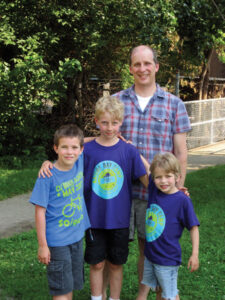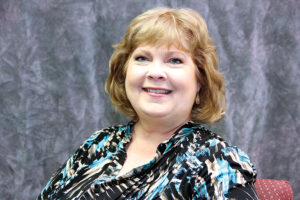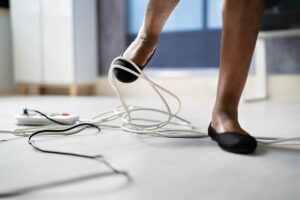 The heat on that summer day was almost unbearable. So Steve Wald, his two sons – Jesse and Peter – and their friend, Daniel, hopped on their bikes and headed to the local pool at Crystal Lake Park.
The heat on that summer day was almost unbearable. So Steve Wald, his two sons – Jesse and Peter – and their friend, Daniel, hopped on their bikes and headed to the local pool at Crystal Lake Park.
Shortly after jumping in the water, the pool closed for a mandatory half hour after thunder was heard. The pool’s policy is to remain closed for a half hour after thunder is heard or lightning is seen.
After the half hour wait was almost up, thunder boomed again and the pool closed for another half hour. Rather than wait again, Steve decided they should just head home.
They had no idea that they would end up only seconds away from being in an accident with an overhead power line brought down by the force of a storm that day. On their bike ride back, when they were only three blocks from home, they found themselves caught in a storm.
The sky grew very dark, and the wind whipped up. Suddenly, with a flash of light, a power line came crashing to the ground along their path home, just down the street from where the boys were.
The young boys described the scene as having a loud sounding crash, a flash of light, and a distinct metallic smell.
Steve immediately took the boys to a nearby friend’s house for shelter. He knew it was safer inside.
“Getting caught in the storm really did turn out to be a risk, and if our timing was a little bit different…,” Steve reflects. Looking back, he shudders to think what could have happened to himself and his loved ones that day if their timing would have been different.
Steve, Jesse, Peter, and Daniel know the situation could have ended tragically and are working with Safe Electricity to help keep others safe. They urge you to:
• Check weather forecasts so you plan to stay inside when a storm threatens.
• If you are outside, seek safe shelter in an enclosed building or vehicle.
• If you see a downed power line, stay far away, instruct others to do the same, and call 911 and the utility immediately.
The National Weather Service estimates a total of 280 people in the United States get struck by lightning every year. Thirty-nine end in death. Lightning strikes the U.S. millions of times each year, and every strike is a potential killer. To keep your family safe, it is important to know what actions to take during a thunderstorm.
There is no safe place from lightning when you are outside. To be as safe as possible, you must seek shelter indoors or in an enclosed metal topped vehicle when there is a thunderstorm in the area.
One good way to stay safe from the threat of lighting is to plan ahead. Listen to the forecast to know if there is a danger of severe weather, and make sure you can get to a safe location if a thunderstorm develops. Remember, if you can hear thunder, you are close enough to be struck by lightning.
However, if you make it indoors, that does not mean you are completely clear from danger. Electrical current from lightning can enter your home through phone lines, electrical wires, cables and plumbing.
During a thunderstorm, stay away from electrical outlets and any corded devices that could carry an electrical surge if lightning were to hit your home. Turn off or unplug such appliances, stay away from television sets, and do not depend on surge protectors to absorb a lightning strike.
Avoid water and contact with piping, including sinks, baths and faucets. Do not wash dishes, shower, or bathe during a thunderstorm.

After a storm, wait until 30 minutes have passed without lightning or thunder before returning outside. Lightning can strike up to 10 miles from the area it is raining. If a person is struck by lightning, call 911 and care for the victim immediately. You are not in danger of being shocked or electrocuted by the victim.
Don’t take chances with your safety. Don’t get caught in a storm. Learn more and see Steve, Jesse, Peter and Daniel’s story at SafeElectricity.org.








